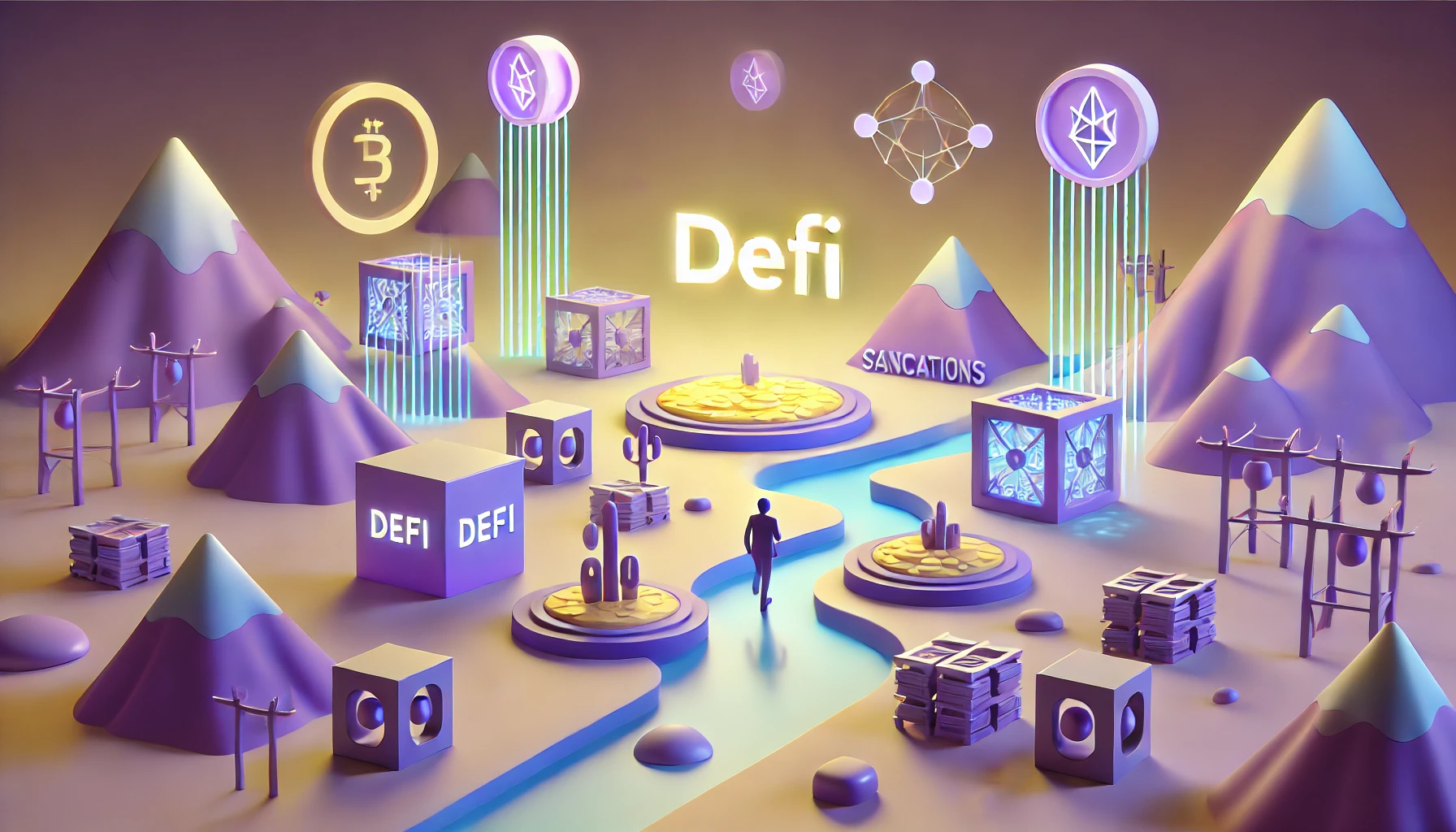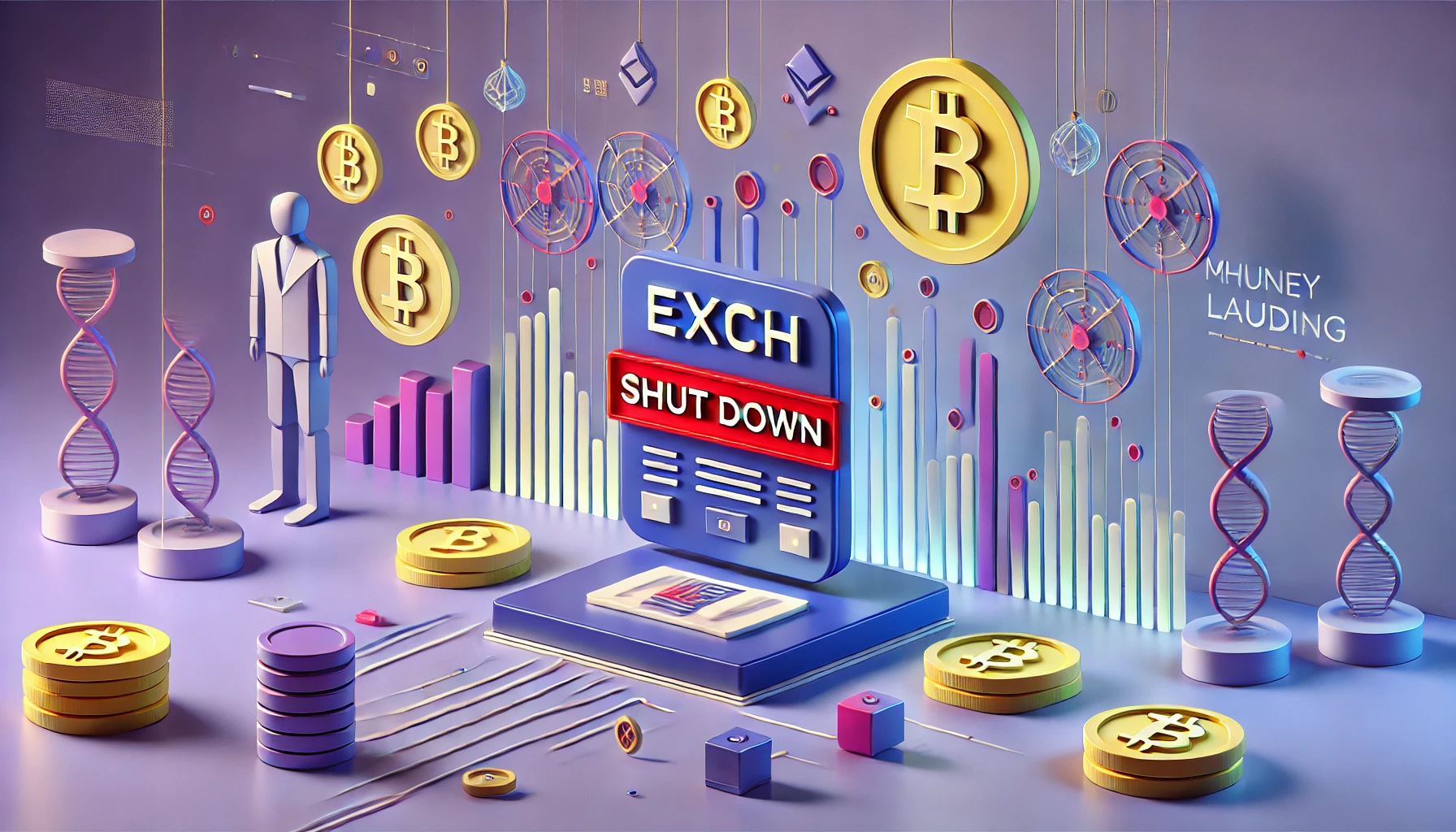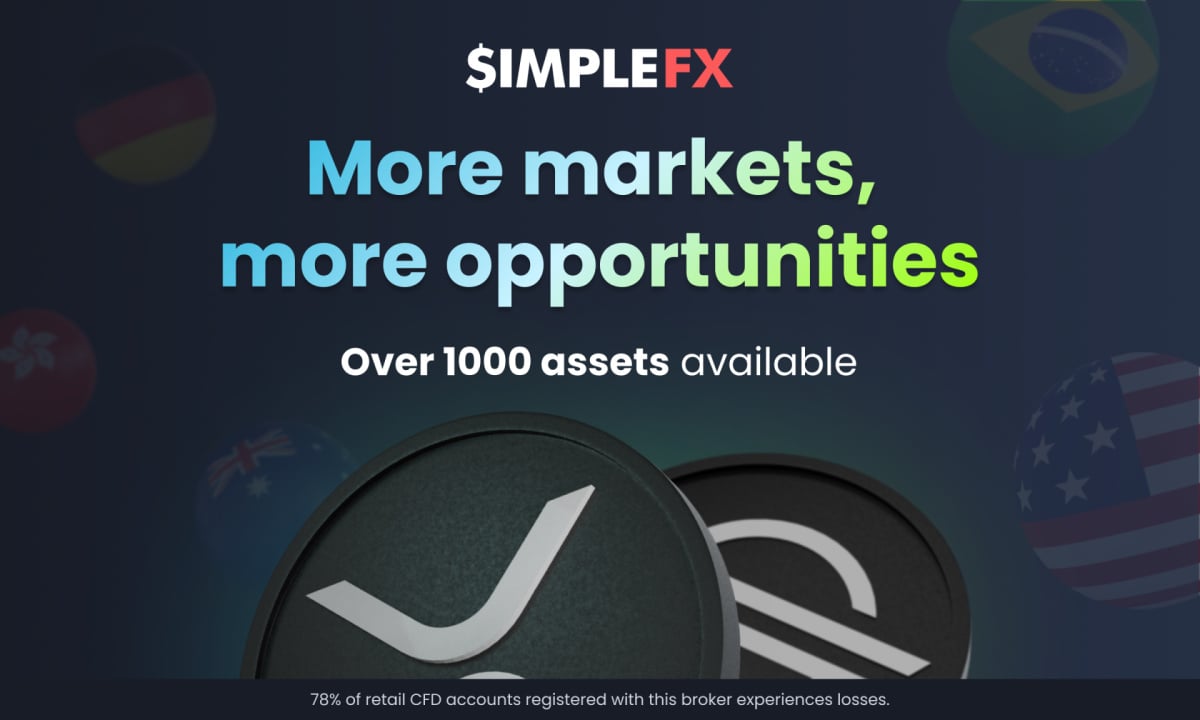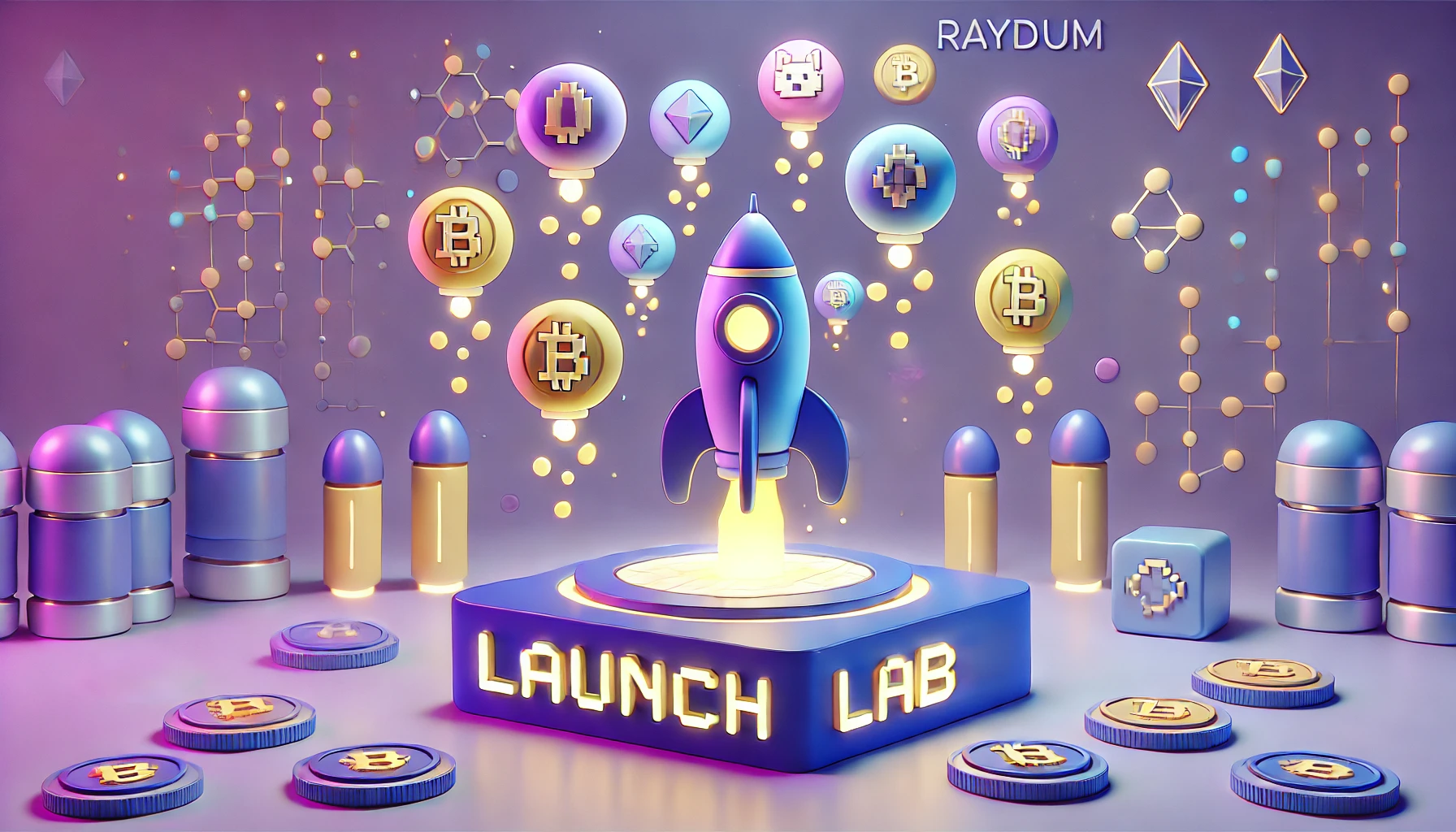ChainLink is a decentralised oracle network based on the Ethereum blockchain. This network was the first to appear, in 2017, to offer an oracle service to smart contract users. Thanks to its decentralised oracle network, ChainLink has been able to solve the reliability problems generally encountered by oracle users.
Today, ChainLink is the 11th largest cryptocurrency in terms of market capitalisation. Despite the lack of communication around the project, it is undeniably one of the leaders in the oracle service. Its future development on other blockchains should consolidate its position as market leader.
Key figures for ChainLink, the first decentralised oracle network
ChainLink share price in euros
ChainLink share price
Source: Coinmarketcap.com
ChainLink’s current share price
ChainLink’s LINK token is currently trading at €23.88. The price of this cryptocurrency has been rising steadily since last week. ChainLink has been on an upward trend since the end of 2020, following in the footsteps of the behemoth Bitcoin, which is taking the majority of cryptocurrencies with it.
ChainLink ranks 11th among cryptocurrencies with a total market capitalisation of €23,875,561,546.32. 416,009,556 LINK tokens are currently in circulation.
The history of ChainLink and the price history of LINK
ChainLink is a decentralised oracle network genuinely launched by SmartContract.com in 2017. This company, founded in 2014, was working on a solution to enable a connection between smart contracts and any programming interface or other data source. The company initially proposed a centralised oracle solution. However, this centralisation left room for fraud and SmartContract.com found itself totally dependent on its oracles. ChainLink therefore saw the light of day in September 2017, after an ICO that raised $32 million in exchange for 1 billion LINK tokens, i.e. 35% of the total tokens created by ChainLink.
2017 : ChainLink’s token debuted on the stock market with a share price of 17 euro cents. In October, it reached 38 cents, only to fall back below 20 cents in early December. Finally, LINK ended its first year at 45 euro cents.
2018: ChainLink got off to a very good start in 2018, with its share price hitting an all-time high of €1.067 on 10 January. Unfortunately, the LINK price quickly fell back, fluctuating between 20 and 50 cents for most of the year. It reached 14 cents on 24 June. It rose to 53 cents on 14 November, only to fall back again just as quickly. It finally ended the year at 26 centimes.
2019 : 2019 was a good year for ChainLink, with the share price breaking the 1 euro barrier in June and never falling below it again. This rise was due to the announcement of a cooperation between ChainLink and GoogleCloud on Twitter. The young cryptocurrency then set its first record at €3.396 on 30 June, thanks to its listing on the Coinbase platform, one of the market leaders. It gradually fell back, but remained above the €1.3 mark. It rose again in November, reaching €2.81 on the 14th, before ending the year at €1.628.
2020 : 2020 was a spectacular year for ChainLink’s share price. The price of its LINK token rose steadily, reaching €4.255 on 19 February. ChainLink’s share price then fell slightly, but rose again to €4.295 on 5 March, before falling back below €2. Its share price fluctuated timidly between €3 and €4 from April to July. On 7 July, China activated its national network, the Blockchain Service Network (BSN), and announced that 135 of its nodes had been integrated into the oracle ChainLink network. This announcement led to a spectacular rise in ChainLink’s share price. On 17 July, it reached a first peak of €7.35, followed by a second peak on 16 August of €16.639! This value was its annual record. Eventually, ChainLink entered a downtrend until October, when its share price fell back below €7. ChainLink then benefited from the uptrend in Bitcoin, although it did not exceed €13.5. LINK ended 2020 at €9.29.
2021 : The year 2021 got off to a very strong start for ChainLink, whose price is experiencing an upward trend. On 14 February, it reached an all-time high of €28.836 per token. Since then, the LINK price has fluctuated around the €25 mark, without ever falling below €20.
ChainLink’s stock market listing
What factors influence ChainLink’s share price?
The ChainLink LINK price is influenced by multiple factors, common to all cryptocurrencies.
Cryptocurrencies all have the characteristic of being extremely volatile due to the many factors that continually influence them. Their prices are likely to soar or, on the contrary, plummet in just a few hours at the slightest event. All investors need to be aware of these key factors and keep an eye on them. Here are the main influencing factors that drive the price of cryptocurrencies like ChainLink :
Trends in the cryptocurrency market
The prices of different cryptocurrencies generally follow the same trends on the stock market. When a cryptocurrency gains in popularity, the whole market benefits. Investors don’t want to stake all their capital on the same security, so they look to its sister currencies, which in turn gain new buyers. The same applies when the price of a cryptocurrency collapses for any reason. Buyers become suspicious and all the other prices fall in turn. Obviously, it’s the most powerful crypto-currencies that lead the way, with the behemoth Bitcoin at their head. That’s why ChainLink’s price has been on an upward trend since the end of 2020, just like Bitcoin.
If the price of a young, little-known cryptocurrency collapses, its fall is likely to have very little impact. On the other hand, if it is the Bitcoin price that falls, it is likely to take all the altcoins with it.
The principle of supply and demand
ChainLink, like any listed security, is subject to the law of supply and demand. The principle is extremely simple. The price of its LINK falls when supply exceeds demand and, conversely, it rises when demand exceeds supply. In other words, the easier it is to find a LINK (supply exceeds demand), the cheaper it is to buy. Conversely, the rarer the LINK becomes (demand exceeds supply), the higher its market price.
ChainLink’s reputation among the crypto-community and the public
The reputation a cryptocurrency enjoys within the crypto-community, but also with the general public, can significantly influence its price. Indeed, a cryptocurrency that receives nothing but extremely positive feedback from its users, that offers interesting long-term projects and that attracts the curiosity of large companies, generally attracts a large number of investors. Its price is therefore likely to rise.
On the other hand, some cryptocurrencies with a rather gloomy reputation, because they are used on the darkweb for example, or which do not meet their development objectives, are likely to see their prices fall.
ChainLink and its LINK will therefore have to live up to the public’s expectations if they are to enjoy a good reputation and retain their current position as the 11th-largest cryptocurrency, or even move up the ladder.
How governments welcome cryptocurrencies
For the time being, crypto-currencies remain beyond the control of governments. Nevertheless, their growing existence and importance will inevitably lead to attempts at legislation. South Korea was the first to announce its intention to legislate on Bitcoin a few years ago.
Many governments are also talking about adopting their own cryptocurrencies. We can imagine that they will then try to hinder the development of non-governmental cryptocurrencies, in which case their prices will collapse in no time. In the case of South Korea, rumours that it wanted to ban the buying, selling, storing and mining of Bitcoin (BTC) on its territory caused the Bitcoin price to plummet.
The price of ChainLink’s LINK will therefore also depend on the goodwill of the public authorities.
The evolution of the ChainLink network
In the end, this is the only factor over which ChainLink has any real room for manoeuvre and, inevitably, a great deal of responsibility. The evolution of the price of its LINK will depend on the evolution of the ChainLink network itself. Cryptocurrencies are constantly evolving and some of them are extremely dynamic and responsive, always offering new solutions and improvements.
ChainLink’s ability to renew itself, to match and surpass its competitors and to stand out, will obviously influence the price of its LINK. Investors generally like to follow the progress of their cryptocurrencies by comparing them with the announcements made on the roadmap. The new features on ChainLink’s roadmap will have to be released on time and live up to the expectations of its users. Its share price will be largely influenced by their success or failure.
ChainLink’s forecasts and future
Forecasts for ChainLink’s share price are pretty good at the moment. Analysts forecast ChainLink’s stock price to rise in 2021.
Tauxde.com is forecasting an increase in ChainLink’s share price for the year as a whole, with an average year-end price of €41.04 per token in 2021. ChainLink’s share price is expected to fall in July to €27.39 and in October to €30.50. But it will rise again the following month. For December 2021, this analyst forecasts a minimum price of 35.38 euros and a maximum price of 43.91 euros. This upward trend is set to continue until June 2022, when the average price is forecast at €64.94. ChainLink’s share price would then enter a downward phase, ending 2022 at an average price of €37.05.
Tradingbeasts, on the other hand, is forecasting a steady but much less spectacular rise. The average price of a LINK token would be $23.978 for April 2021, or €20.43 at current exchange rates. ChainLink’s share price would then begin its upward trend, reaching an average price of $26.599 (or €22.66) in December. Its minimum price is forecast at $22.609 (€19.26) and its maximum price at $33,249 (€28.33). This upward trend is set to continue throughout 2022, with an average price of 31.508 dollars in December, or 26.84 euros at current exchange rates.
These figures are therefore extremely different, but no spectacular fall is expected for the time being, which is good news! Nevertheless, we would remind you that cryptocurrency prices are extremely volatile, so it is impossible to really predict how they will develop. These calculations are based on historical prices and current trends, and do not take future events into account. So be extremely careful if you want to invest in ChainLink or any other cryptocurrency!
Everything you need to know about the ChainLink network
Why was ChainLink created?
ChainLink was created to connect the on-chain world, i.e. what happens on the blockchain, with the off-chain world, or what happens outside it. This connection enables ChainLink to offer its users an oracle service for their smart contracts.
In the real world, contracts are signed through intermediaries. These intermediaries make transactions more expensive, by imposing their commissions, and the application of contracts more subjective, since human beings are in charge of verifying their clauses. Smart contracts make it possible to dispense with these intermediaries. These contracts are drawn up and monitored on the blockchain. The contract then executes itself. By eliminating the human intermediary, this process saves time and money.
However, some of the data needed to apply the contract may be missing, because the contract only has access to the data already on the blockchain. In the real world, the human intermediary would be responsible for collecting the missing data, but he is no longer available here. It was therefore necessary to create a system for collecting this data from outside the blockchain. This is how the oracle system came into being, to enable it to be collected. ChainLink is a decentralised oracle network offering this service.
What are oracles and ChainLink in particular used for?
Oracles optimise smart contracts by searching for missing data externally and entering it into the blockchain. ChainLink provides this oracle service to users of smart contracts. But its network has a special feature: it is the first to use independent oracles.
ChainLink is based on a decentralised oracle network. When a user makes a request for an oracle, ChainLink turns to all the oracles on the Ethereum blockchain. This independent oracle system gives ChainLink much greater freedom and control over the information. A centralised oracle system makes the network dependent on its oracles, which can introduce false information into the network. ChainLink, by turning to various oracles, multiplies the sources of information. Its network then synthesises all the results and sends the most precise and accurate response possible to the user who made the request.
ChainLink bases its system on reputation. Oracles are rated and remunerated in LINK. In this way, oracles who have been recognised as reliable sources and offer interesting data will be introduced to larger contracts and can earn more LINK. On the other hand, oracles that have received a poor rating because they have been deemed malicious for providing false information will suffer a substantial loss of earnings. What’s more, they will no longer be selected because of their poor rating. This system ensures the reliability of the oracle service offered by ChainLink.
How does ChainLink work?
The ChainLink network is made up of two infrastructures: one on-chain and one off-chain. The token developed on its network is the LINK. It is an ERC-677 token, based on the ERC-20 tokens used by the Ethereum blockchain. This means that its token can evolve on any network that supports the ERC-20 token. The LINK token powers operations on the ChainLink network and rewards operators for providing data during oracle requests.
ChainLink’s on-chain network
ChainLink’s on-chain network is deployed on the Ethereum blockchain and consists of a smart contract and, more specifically, an “oracle contract”. This oracle contract is actually implemented in three stages, each based on a different contract:
Firstly, the selection of oracles, which is done using the reputation contract. This contract verifies the quality and intentions of the oracle’s supplier. This verification is based on criteria previously established by the user. Once this check has been carried out, the oracles can be selected either automatically, by ChaintLink, or manually, in which case the user will select the oracles himself.
Next comes the transfer of the data received to the user, which first goes through the order-matching contract. This contract enables the price to be negotiated between the requester and the supplier of the information. Once an agreement has been reached, the transfer takes place.
Finally, the results are received via the aggregating contract, which compares the information provided by the various oracles to select the most relevant. When several results are different, ChainLink balances the values.
It is therefore through this oracle contract that ChainLink users will be able to obtain information that lies outside the chain, off-chain. In order to launch a search and activate the oracle contract, ChainLink users must first launch a user contract. ChainLink will treat this user contract as an oracle request for which it will initiate its oracle contract procedure.
ChainLink’s off-chain network: how the oracle service works
The off-chain network is based on “oracle nodes” located on the Ethereum network. When these nodes are requested by the oracle contract, they launch their search. There are three stages: collection, processing and transmission.
The data collected is processed by the ChainLink Core, which is the system’s central node. Once the data has been processed, the ChainLink Core sends it via the oracle contract. The operators behind the selected oracles then receive LINK tokens for their work. These operators are also graded according to the quality and reliability of the data they have contributed. The higher their score, the more likely they are to be selected to respond to oracle requests for large contracts, thereby earning more LINK. This possibility has prompted developers to offer “external adapters” on the ChainLink network. These adapters would enable operators to provide increasingly accurate and interesting data in response to oracle’s requests, thereby increasing their profits. If one of the operators tried to transmit false information, either for his own benefit or because he was paid to do so, he would receive a bad mark, which would prevent him from receiving new contracts. They will also be exposed to a financial penalty. This technique provides an effective deterrent against fraud and ensures the reliability of information.
For the moment, the ChainLink network is deployed on the Ethereum blockchain, but it will eventually be able to launch its research on all other blockchains.
Choosing ChainLink as an oracle network?
Using an oracle network to run and monitor your smart contracts can be vital. Thinking of ChainLink to run this service may seem like a safe option as it was the first decentralised oracle network to be launched. It therefore benefits from a certain amount of experience and its network is supposed to be a model of reliability. So what are the advantages and disadvantages of ChainLink?
The advantages of the ChainLink network
ChainLink makes it easy to acquire information outside the blockchain thanks to its decentralised oracle network. Users wishing to launch an oracle request can customise it by inserting criteria for the choice of oracle(s). Finally, ChainLink balances the values when its network receives different responses to an oracle request. This ensures that oracle requests are answered as accurately as possible.
It is also a secure solution thanks to the rating system that discourages any operator from transmitting false information to the network during an oracle request. So you can trust it to optimise the monitoring of your smart contracts.
Its network is currently deployed only on the Ethereum blockchain, but it aims to be universal. ChainLink should therefore be able to be used on all blockchains in the future.
The disadvantages of the ChainLink network
The major drawback of the ChainLink network lies in the distribution of these tokens. Only 35% of ChainLink’s LINK tokens were sold to the public at the 2017 ICO. This leaves 65% in the hands of its creators and certain network operators. This distribution ultimately makes it a fairly centralised cryptocurrency.
ChainLink’s second problem is undoubtedly the lack of communication about the project, both in terms of its activity and future development, and from a marketing point of view. This makes it a network that is still little known, despite its effectiveness.
Finally, ChainLink is currently facing dynamic competition that seems to be moving ahead much faster than it is. What’s more, the lack of communication from its team means that it is impossible to get a glimpse of how they feel about this competition and their plans to counter it. Investors generally like to follow the progress of their cryptocurrency. Here, don’t expect a team that will share the slightest little breakthrough or new idea with its community.
How do you manage your ChainLink LINK tokens?
How do I get ChainLink tokens in 2021?
ChainLink LINK tokens are available for sale on cryptocurrency exchange platforms, such as Kraken, Binance, Coinbase and others. You can carry out your transactions there in complete security.
You will need to create an account and the platform will check your identity. Generally, the platforms will ask you for a valid form of ID, as well as a photo of you holding the ID in your hand. You will also need to choose a password. Think about security! Choose a highly secure password and keep it in a safe place.
Then go to the purchase section! You’ll find that transaction fees and payment methods vary from site to site. Kraken, for example, only accepts bank transfers. However, its platform charges a commission of 0.16% for transactions under $50,000 – one of the lowest on the market! Kraken can therefore be a very attractive platform for investors wishing to convert large sums of money into cryptocurrencies. On Coinbase, commission varies depending on the payment method used. Here, bank cards and transfers are accepted! Expect to pay a commission of 1.49% on purchases made by bank transfer and 3.49% on purchases made by credit card. Some platforms also accept SEPA transfers and direct debits, which we recommend if you are in Europe.
There is a wide range of exchange platforms. It’s up to you to compare and choose the platform that interests you most! As for your bank, the good news is that it won’t charge you any fees for making your purchases.
How do you store and secure your ChainLink tokens?
Once you have purchased your tokens, there are several storage solutions available to you. You can simply leave them on the purchase platform, but this is a risky solution. The slightest problem with the platform and you could lose all your capital!
The most secure solution is still to choose a cryptocurrency wallet. You can choose to keep your precious LINK in several types of wallet. There are two main families: cold wallets and hot wallets. Note that not all wallets support all cryptocurrencies. Check carefully that your LINK tokens are compatible with the solution you choose.
Cold wallets: the off-line solution
Cold wallets are wallets that allow you to store your cryptocurrencies without any contact with the Internet. These wallets therefore have the advantage of preventing any online attacks by hackers. This is undeniably the solution of choice if you have large amounts of cryptocurrency. If you choose this storage solution, you have two options:
Hardware wallets. They ensure your anonymity and high security for your assets. These wallets take the form of a USB key. They do not require an Internet connection. They keep your private keys separate and allow you to carry out your transactions offline. So you can’t have your cryptocurrencies stolen by connecting to the internet. Nevertheless, take great care of your wallet. If it is lost or damaged, you could lose all your capital. You should also be aware that not all hardware wallets have the same features. So compare them before you buy one, and remember to check that it will be compatible with your ChainLink tokens! Not all wallets support all cryptocurrencies!
Paper wallets. These wallets are actually just a sheet of paper on which a private key and its corresponding address are printed. To create your own paper wallet, visit a ChainLink-compatible paper wallet generator. Some sites allow you to download their generator so that you can then generate your wallet offline. This solution is preferable if you really want “cold” security, i.e. away from the Internet and hackers!
Hot wallets: the connected solution
Hot wallets are wallets connected to the Internet. They have the advantage of generally offering speed and simplicity. However, they also offer many more opportunities for hackers, so forget about them if you have chosen to invest in ChainLink on a large scale.
Web wallets. They allow you to manage your funds quickly. Web wallets work in much the same way as exchange platforms; you need to create an account. However, you retain control of your private keys. These wallets are certainly the most vulnerable. But some platforms, which are regarded as the benchmark in the field, guarantee a high level of security thanks to regular updates and checks.
Browser extensions. You can download a browser extension. There are several extensions, depending on your browser and the blockchain you want. These extensions communicate easily with the decentralised blockchain network. However, not all of them verify transactions, so beware of hackers and scams.
Desktop wallets are another online storage solution, but they are aimed at experienced users. This software must be installed on a secure device (your server, desktop or smartphone, for example). They keep your keys private. You will have more autonomy than with a web wallet, but also more responsibility. There are two types of desktop wallet.
Full nodes. Full nodes are a copy of the blockchain. They are used to validate new transactions and register them on the blockchain. Having a full node means that you have a history of all the transactions on the blockchain, including your own. This gives you proof of your capital of tokens on the blockchain in question. However, this alternative is highly technical and is not for beginners. Unlike wallets, in which you can store different assets in the same place, here each complete node downloaded will be dedicated to a blockchain.
Lightweight wallets. Also known as “SPV wallets” for “Simplified Payment Verification”, these wallets do not download the entire blockchain. Verification is therefore quicker and simpler. They communicate easily with blockchain nodes. There are several types of lightweight wallet, some of which are dedicated to a single cryptocurrency, while others support several. Similarly, you can find lightweight wallets for mobiles, others for computers, etc.
How do you sell your ChainLink tokens?
Want to sell your ChainLink tokens? The process is extremely simple! Go back to the cryptocurrency exchange platforms that are also used to buy them. These platforms allow you to buy, sell and exchange cryptocurrency! All you have to do is log in to your account, or create a new one if you change platforms at the time of the sale, which is perfectly possible.
Then log in to your cryptocurrency wallet to access your LINK tokens from ChainLink. Return to the exchange platform, then in the sale section choose LINKs. Then generate a new address. It is important to request a new address for each transaction. This improves confidentiality and security. In your wallet, go to the send section and enter the address generated by the platform. Enter the amount of LINK you wish to exchange and validate your transaction. Your precious ChainLink tokens should have been credited to the platform. You can close your wallet, you won’t need it anymore.
In the sales platform menu, choose LINK/EUR (or any other currency). On the transaction page, choose ‘sell’ and enter the amount of LINK you wish to exchange. You can sell them immediately at the Market price, or specify a Limit price. Your sale will then take place automatically as soon as ChainLink’s share price reaches the specified price. You can then confirm your transaction. If you sell at the market price, your account will immediately be credited with euros on the platform.
To withdraw this capital from your account, simply go to the ‘Withdraw’ section. As at the time of sale, transaction fees will be applied by the platform. You will be informed of the amount before you validate your transaction. Then enter your bank account details (you can save them for future use) and confirm the transaction. Your euros should arrive in your bank account within a few days. The time taken may vary depending on the amount of your transaction and the platform used.
Have you lost access to your ChainLink tokens?
Regardless of the cryptomonaie, you will not be able to access your capital if you have lost your access codes. If it’s nothing more than the password to your account on the trading platform where your precious ChainLink tokens are held, you can try contacting a specialist service to crack your code. This solution is very rarely successful, but it is the only one available to you. On the other hand, if you have lost your private key, you can simply say goodbye to your LINKs. There is absolutely no going back. In the event of piracy, there is no protection, insurance or guarantee. If the pirates take all your funds, the same applies – you’ll never see them again.
The security of your tokens is therefore paramount, so never underestimate this aspect. Keep them in a safe place, choose off-line solutions for large amounts, choose highly secure passwords, never save them on your devices… In the end, the paper option is still the best solution. This will keep your passwords safe from hackers. But, of course, keep your paper safe and don’t lose it! Obviously, don’t put your access codes on a post-it note for everyone to see. And don’t leave your paper crypto wallet sitting in the middle of your desk either! Fans of the paper solution generally place their precious sesame in a safe, out of sight.
Cryptocurrencies offer us many advantages: decentralisation, autonomy, anonymity, and so on. But they also mean a lot more responsibility. You are alone with your capital and you have no possible recourse in the event of a problem! So take great care and remain vigilant at all times.
Our opinion of ChainLink
In our opinion, ChainLink is a must-have network for users of smart contracts on Ethereum, for the time being. ChainLink effectively relays information between the outside world and the blockchain, so its network will give you the benefit of an effective oracle system. What’s more, and this is its major attraction compared with its competitors, ChainLink is one of the few networks to offer a decentralised oracle system, which ensures the reliability of the information transmitted to its users. So if you want to get started with smart contracts, we recommend Ethereum and the ChainLink network for your oracle requests.
We hope that ChainLink will soon be launched on other blockchains, as its founders plan, so that all cryptocurrency users can benefit from it if they wish.
Should you invest in ChainLink’s LINKs?
From a strictly stock market point of view, LINKs look like a very promising currency to invest in. Their price is quite reasonable and forecasts for the coming months and years all point to an increase for the time being. Nevertheless, many investors are reluctant to buy LINK tokens. So why the boycott of ChainLink?
The criticism levelled at ChainLink concerns the distribution of its tokens. Only 35% of them were sold to the public during the 2017 ICO. 32% were sent to node operators and the rest stayed with ChainLink to fund its development. Investors therefore only own a third of the tokens. This is a disincentive for many of them. Cryptocurrencies arose in particular from the desire to offer a decentralised alternative. By offering a decentralised network, it is much more difficult to see a group rallying around a project for their own benefit and influencing the network in their direction. However, the distribution of ChainLink tokens in no way makes it a decentralised network (its oracle system is indeed decentralised, but its network is not – be careful not to confuse the two). So you’re not safe from collusion orchestrated by its team of developers!














